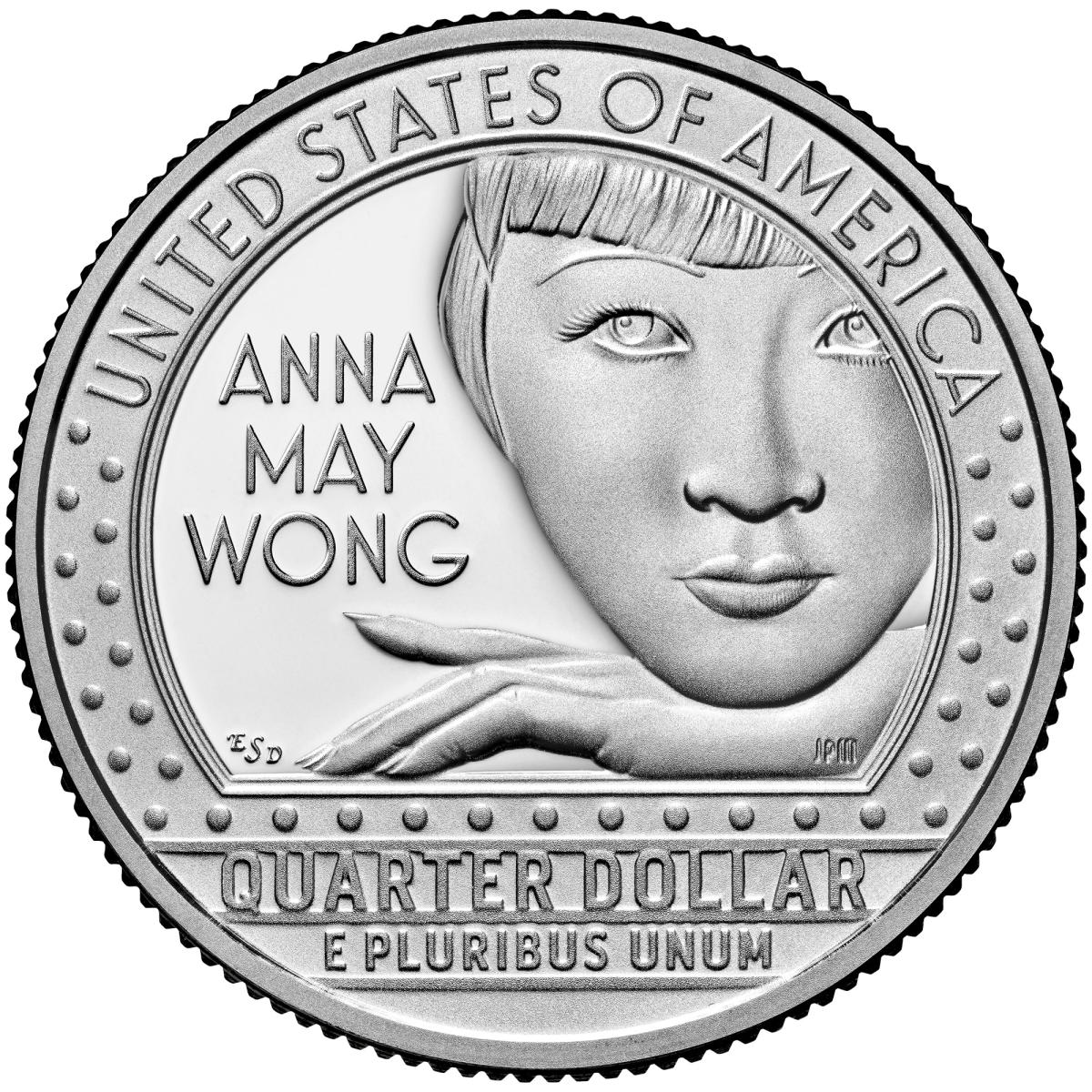The first piece of U.S. currency to carry the likeness of an Asian American will begin shipping on Monday, according to the U.S. Mint.
On the tails side of a new quarter will be the Chinese American actress Anna May Wong, chin resting on her hand, framed by the “bright lights of a marquee sign,” the Mint said. Wong’s coin is the fifth in a series of quarters to feature prominent American women. There has been “overwhelming demand” and most of the coins are already sold out, according to the Mint’s website.
Wong is regarded as Hollywood’s first Asian American movie star. The third-generation American’s career took off at a time of widespread anti-Asian xenophobia, with the Chinese Exclusion Act still in effect. She gained fame for her roles in silent films like “The Toll of the Sea” (1922) – one of the first Technicolor movies – and “The Thief of Bagdad” (1924).
But as an Asian woman, she was often relegated to playing the villain, the enslaved person or the maid, so much so that she has often been referred to as “the actress who died a thousand deaths.” In “The Toll,” Wong played a villager who rescues a White soldier from the ocean. (He leaves and returns with a White wife, distressing Wong’s character, Lotus Flower.)
“I was so tired of the parts I had to play,” Wong said in a 1933 interview, according to the Los Angeles Times. “Why is it that the screen Chinese is nearly always the villain of the piece, and so cruel a villain – murderous, treacherous, a snake in the grass. We are not like that.”
While Wong was hailed for her beauty, the compliment usually came with the disclaimers that she was “exotic” or “oriental.”
She tried to break out from playing the antagonist but met resistance, in part due to restrictions on interracial displays of affection. Wong vied for the starring role of O-Lan in the 1937 film “The Good Earth” but was instead offered the role of Lotus, a sex worker who becomes the concubine of O-Lan’s husband.
She declined, refusing to be the sole Asian cast member – lead roles were given to White actors – in the “only unsympathetic role,” she said. The White actress who was cast as O-Lan, Luise Rainer, won the Academy Award for Best Actress for her role in the film.
“Wong sought to be valued as an actress, a woman with vision and ambition, and an American, all at a time when U.S. society could not imagine a Chinese American woman beyond the limits of racialized and gendered stereotypes of Asian women as exotic and foreign,” said Karen Leong, a professor of Asian Pacific American studies at Arizona State University and the author of a book on prominent Asian American women, including Wong.
Wong’s career and visibility as an actor and celebrity were “unique for Asian American women of her time,” Leong added.
“As the first Chinese American film star in Hollywood, she faced constant discrimination, frequently being typecast and passed over for lead roles in favor of non-Asian actresses,” Rep. Ted Lieu (D-Calif.) said in a statement Tuesday. “She is remembered not only as a great actress, but also as an advocate for increased representation of Asian Americans in film and media.”
Though Wong, born in Los Angeles in 1905 as Wong Liu Tsong, disliked the roles she was cast in, they also caused problems for her with the Chinese American community, as well as in China. She was criticized at home for perpetuating stale and demeaning stereotypes, and in China, where she toured after “The Good Earth” debacle, she was seen as too American.
The new quarter is not the first major recognition of Wong’s legacy. She was the first Asian American actress to get a star on the Hollywood Walk of Fame, in 1960. Nearly six decades later, Lucy Liu became the second. Liu cited the contributions of Wong – whom she called “a pioneer while enduring racism, marginalization, and exclusion” – as a factor behind her success.
Wong is the subject of an upcoming biopic, starring actress Gemma Chan, who gained international fame in “Crazy Rich Asians” (2018), one of the most successful Hollywood films with a majority-Asian cast.
Chan said in a statement when the biopic was announced that the “challenges and prejudice [Wong] faced in the early 20th century as an actress speak directly to the conversations and the world we are navigating today.” The British actress also paid homage to Wong with her 2021 Met Gala look.
Wong died in 1961 at the age of 56. Though a century has passed since she appeared in “The Toll,” Asian Americans are still underrepresented in American films. According to a 2021 survey by the University of Southern California of 1,300 popular films from 2007 to 2019, only 29 featured an Asian lead or co-lead, and 21 had a Native Hawaiian or Pacific Islander lead or co-lead, totaling just over 3 percent of the films examined. Asians and Pacific Islanders make up more than 6 percent of the U.S. population, according to 2020 census figures.
Related Content
Pirates, Vikings and a dry-river regatta – nowhere but Australia
Leaders of democracies increasingly echo Putin in authoritarian tilt
Senate race in Ohio is ground zero for hopes of more manufacturing jobs




